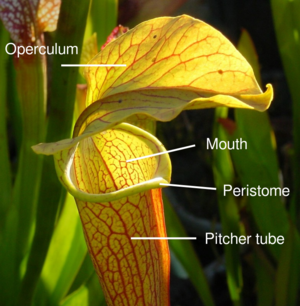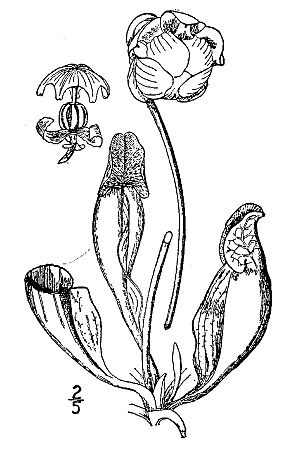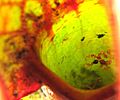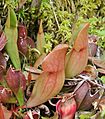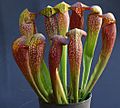Sarracenia facts for kids
Quick facts for kids Sarracenia |
|
|---|---|
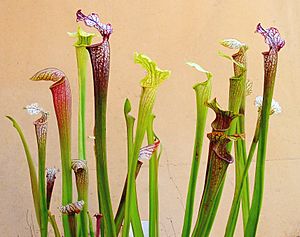 |
|
| Sarracenia species and hybrids | |
| Scientific classification | |
| Kingdom: | |
| (unranked): | |
| (unranked): | |
| (unranked): | |
| Order: | |
| Family: |
Sarraceniaceae
|
| Genus: |
Sarracenia
|
| Species | |
|
See text. |
|
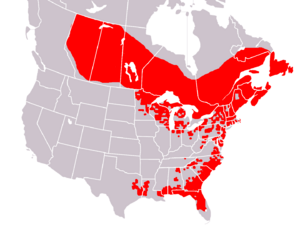 |
|
| Sarracenia range (all species) | |
Sarracenia is a group of amazing plants. They are often called trumpet pitchers because of their unique shape. These plants are found in North America. There are about 8 to 11 different types, or species, of Sarracenia.
These plants are part of the Sarraceniaceae family. This family also includes other cool plants like Darlingtonia and Heliamphora. All of these plants are known for their special way of getting food.
Sarracenia are carnivorous plants. This means they eat insects! They mostly grow along the eastern coast of the United States, in Texas, the Great Lakes area, and southeastern Canada. Most types live in the warm southeastern U.S. Only one type, S. purpurea, can live in colder places.
The leaves of these plants have changed over time. They now look like funnels or pitchers. This special shape helps them catch insects.
Contents
How Sarracenia Catch Their Food
These plants are very clever at trapping insects. They use a few tricks to get their prey.
Attracting Insects with Sweet Smells and Colors
Sarracenia plants have special glands on the edge of their pitcher leaves. These glands make a sweet liquid called nectar. Insects love this nectar! The plants also have bright colors and a unique smell. These features work together to attract curious insects.
The Slippery Trap
Once an insect lands on the pitcher's rim, it's in trouble. The edge is very slippery. This makes it hard for the insect to keep its footing. The insect often slides right down into the pitcher.
Digesting Their Meals
Inside the pitcher, the insect falls into a pool of liquid. This liquid contains special chemicals called proteases and other enzymes. These enzymes help the plant break down the insect's body. It's like the plant is digesting its meal! This way, the Sarracenia gets important nutrients that are missing from the soil where it grows.
Where Sarracenia Live
Sarracenia plants grow in very specific places. They like wet, sunny areas.
Boggy Homes
You can often find these plants in bogs and wetlands. These places have soil that is very wet and often low in nutrients. Because the soil doesn't have enough food, the plants have to get nutrients from insects. This is why being a carnivorous plant is so important for them to survive.
Protecting Their Habitats
Many of the places where Sarracenia grow are now protected. This helps keep these amazing plants safe. It's important to protect their homes so they can continue to thrive.
Images for kids
-
A Sphagnum peat bog in New Jersey. This is a typical home for Sarracenia purpurea. The soil here is always wet, acidic, and low in nutrients.
-
Sarracenia purpurea pitchers growing at Brown's Lake Bog in Ohio.
-
A flowering Sarracenia purpurea plant, which can look very different depending on where it grows.
-
A "pitcher plant meadow" in Florida. Here you can see different types of Sarracenia flava: var. ornata, var. rubricorpora, and var. rugelii.
-
Plants of Sarracenia minor var. okefenokeensis in Okefenokee Swamp Park.
-
A group of Sarracenia oreophila plants in their natural home.
-
The very first drawing of a Sarracenia plant, from a book by Matthias de Lobel in 1576.
See also
 In Spanish: Sarracenia para niños
In Spanish: Sarracenia para niños


